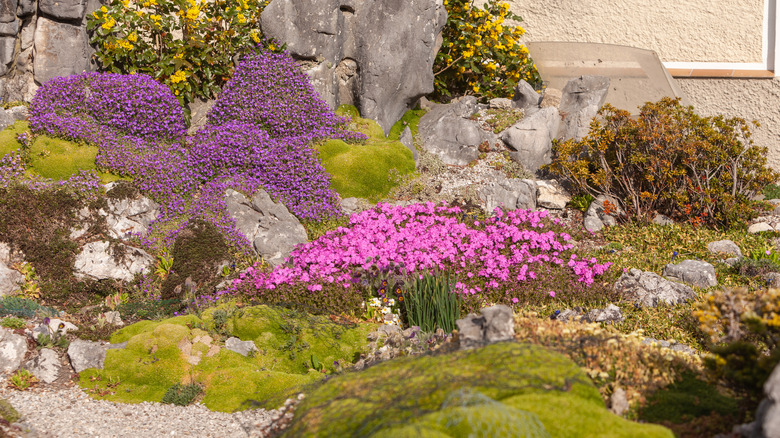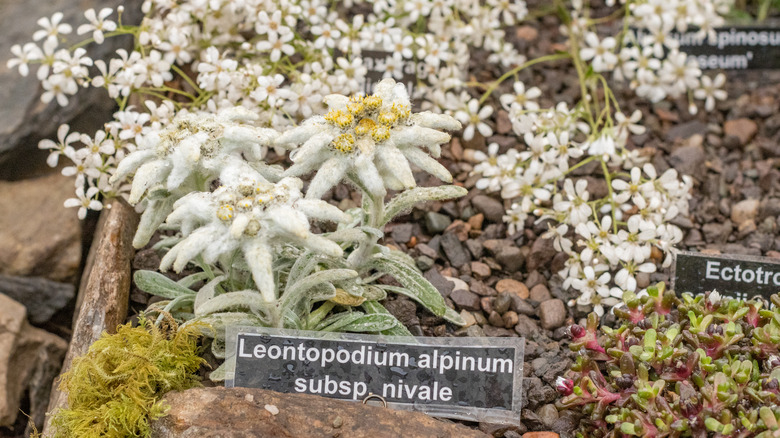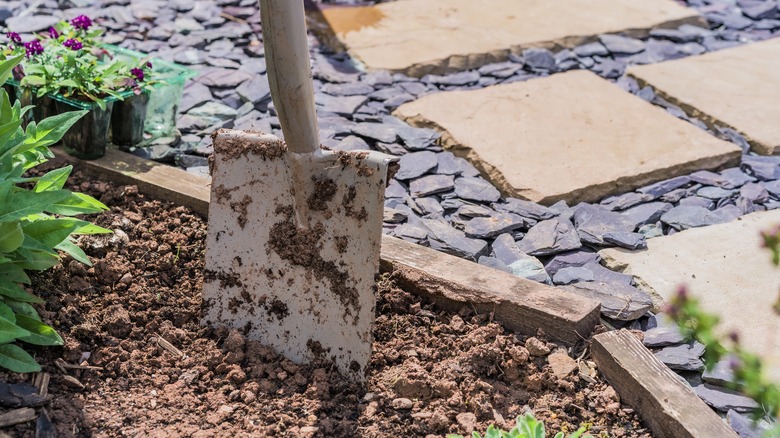The Unique Mountain Flower That Thrives In A Rock Garden
Perched high in the rugged landscapes of the European Alps thrives a delicate yet resilient plant: the edelweiss. It's a star-shaped flower with silvery-white bracts, and it has uniquely adapted to survive in the harsh conditions of mountainous regions where other plants might struggle. Its wooly, star-shaped blooms are not just for show; they play a crucial role in the plant's survival. The thick layer of tiny hairs on the blooms and leaves acts like a natural sunscreen, shielding the plant from the harsh UV rays at high altitudes.
Beyond its botanical attributes, edelweiss has also been a symbol of love and bravery. Folktales recount men risking dangerous climbs to pick the flowers for their sweetheart. But nowadays, edelweiss can be a stunning addition to any garden — especially a rock garden where it feels right at home. If you've always wanted a little piece of the Alps in your yard, learn how to pick the right variety and create the perfect rock garden for edelweiss to thrive.
Picking an edelweiss variety
Edelweiss comes in several varieties, each with its own unique traits, and whichever one you pick will make your flowering garden more stunning. The most commonly grown variety is the classic Leontopodium alpinum, known for its yellowish-white flowers, surrounded by star-shaped, fuzzy gray-white bracts. It typically blooms from May onwards.
Another great choice is Leontopodium Everest. It's also a favorite for its larger flowers and sturdy growth. While it might not be the "real deal" straight from the Alps, this plant is still one of the prettiest around. It tends to grow in small patches starting in June, decked out with tiny, pointy flowers that pop up on short stems all summer long. If you're looking for something a bit different, go for Leontopodium souliei. Hailing from the mountainous regions of China, it grows lower than the alpine variety and forms cushion-like mats that are densely covered with flowers in the summer, beginning in June.
Growing edelweiss in your rock garden
For edelweiss to grow and thrive in your rock garden, you'll need to mimic its natural mountain environment. As edelweiss grows in sunny alpine meadows, choose a sunny spot in your rock garden. Then, make sure to amend the soil by laying down a layer of compost, native soil, and pumice in equal parts. This ensures your soil will be well-drained like the rocky, loose soil alpine plants are used to. If a rock garden isn't available, regular garden soil can suffice; blend it with lawn sand at a 1:1 ratio to enhance drainage.
If you're planting from seed, you'll need to stratify your edelweiss seeds before planting them. Stratifying seeds gives them a better chance to sprout because you replicate the cold temperatures where edelweiss naturally grows. Do this by storing them in the freezer for 75 to 100 days or in a soil-filled plastic bag in the fridge for three weeks. When it's time to plant, scatter those seeds on top of the soil and give them a gentle misting to keep them moist — this works better than a direct pour from your watering can or a harsh blast from the garden hose. Remember, edelweiss flowers don't need a lot of water to thrive. If you overwater them and they get too much moisture, they might end up with root rot. During their first year of bloom, water them only once a week. After that, they won't need regular watering.


